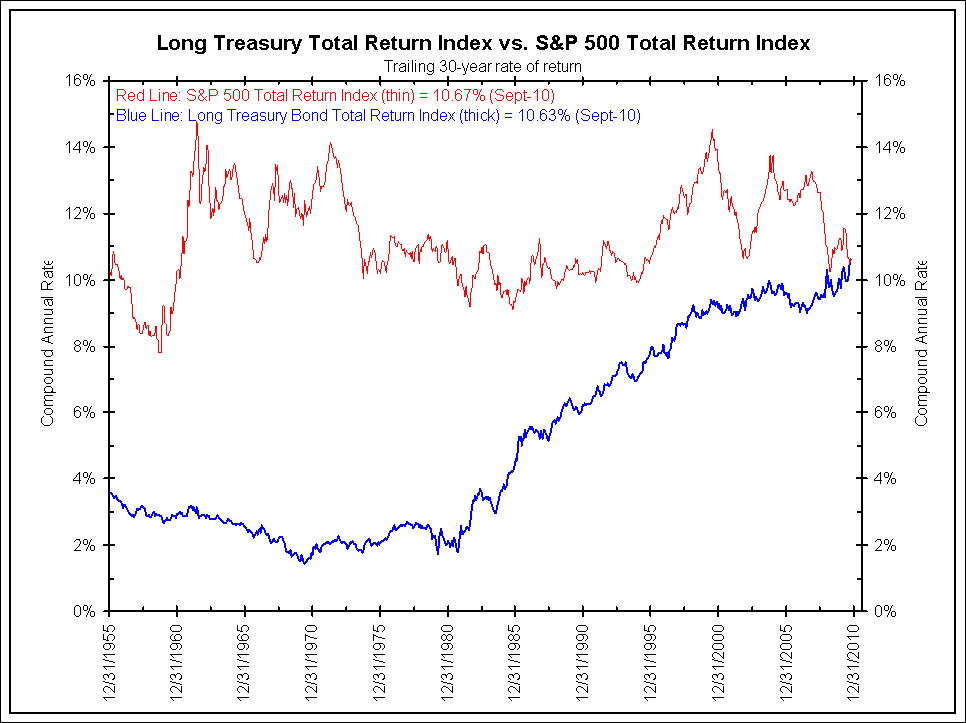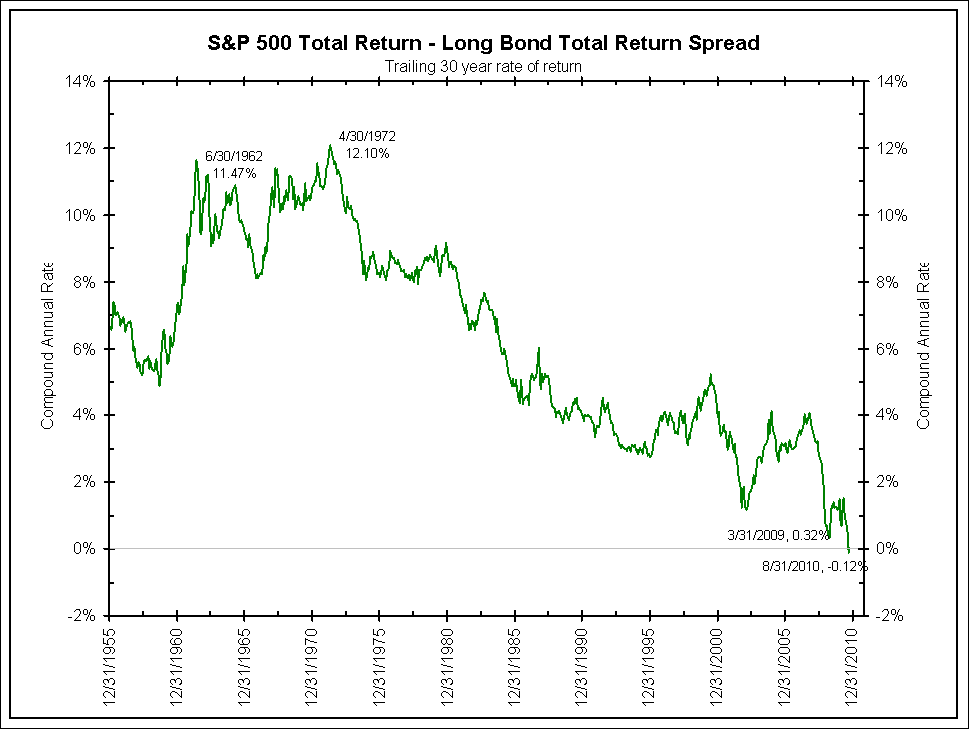by James Bianco
Bianco Research
November 18, 2010
>
The Wall Street Journal – Burton G. Malkiel: ‘Buy and Hold’ Is Still a Winner
An investor who used index funds and stayed the course could have earned satisfactory returns even during the first decade of the 21st century.
“Many obituaries have been written for the investment strategy of buy and hold. Of course, investors would be better off if they could avoid being in the stock market during periods when it declines. But no one—either professional or amateur—has ever been able to time the market consistently. And when they try, the evidence shows that both individual and institutional investors buy at market tops and sell at market bottoms.
Money poured into the stock market at the peak of the Internet bubble during the first quarter of 2000. Stocks and mutual funds were liquidated in unprecedented amounts at market bottoms in 2002 and 2008. Professional investors had large cash holdings at market bottoms but tended to be fully invested during market tops. Buy and hold investors in the U.S. stock market made an average annual return of 8% during the 15 years from 1995 through 2009. But if they had missed the 30 best days in the market over that period, their return would have been negative. Market strategists called for a sharp market decline in late August 2010 as technical indicators were uniformly bearish. The market responded with its best September in decades.”
~~~
Comment: Malkiel is famous for his 1973 classic “A Random Walk Down Wall Street.” In it he argued for the “strong” form of the efficient market hypothesis which states no one person can outperform the market, so don’t try. Just own the indicies for long periods of time and you’ll do as well as any active manager.
Malkiel’s ideas spawned the idea of the index fund, starting with the Vanguard S&P 500 index and eventually the ETF.
In the op-ed above Malkiel is “defending his baby,” asserting that owning indices for long periods is the best investment one can have. Active managerment does not work.
However, as we detailed in our November Total Return Review, data on stock and bonds goes back to 1803 (no typo!) and the last 30 years (1980 to 2010) is the only 30-year period where bonds have outperformed stocks. The charts and table below are from that report.
Malkiel argues that a rebalancing technique will produce superior returns. What he neglects to mention is bonds have outperformed stocks for a generation and counting. How did that happen?
<Click on chart for larger image>
<Click on chart for larger image>
<Click on chart for larger image>





What's been said:
Discussions found on the web: